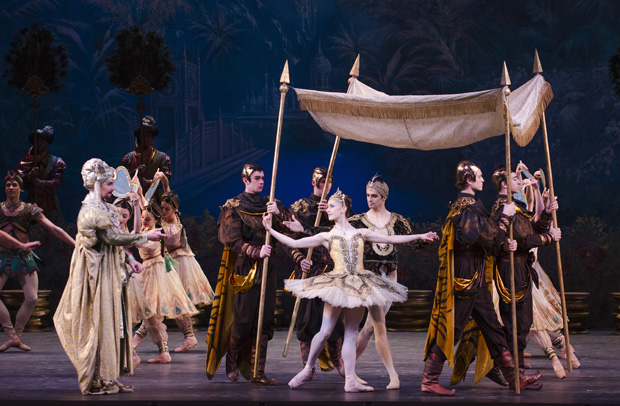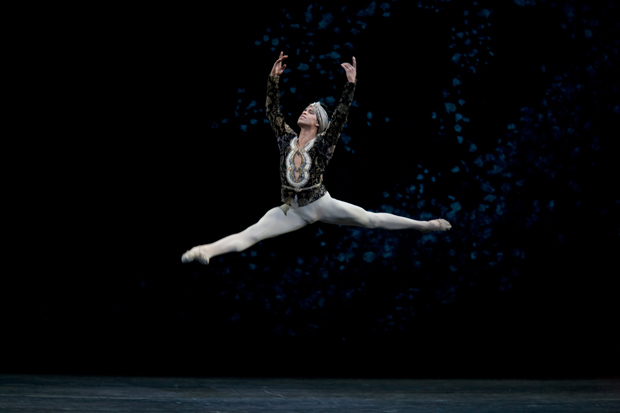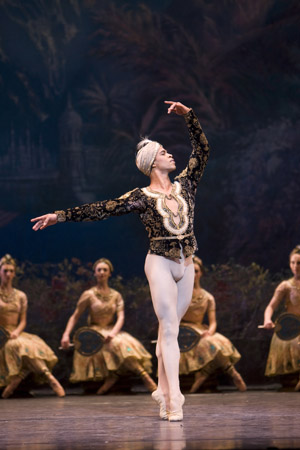You forget the rapturous applause that accompanies an Acosta appearance. It’s deafening. There are many good dancers around, but the might of Carlos Acosta is something else entirely. Onstage as Solor, the warrior in La Bayadère, one is utterly taken in by his strength and charm.

© ROH / Tristram Kenton, 2013
Solor is not the most loveable hero, swearing himself to the temple dancer, Nikiya (la bayadère) before obediently plunging ahead with a marriage to the rajah’s daughter, Gamzatti, when so instructed. Petipa’s tale kills off its heroine in the very first act when Nikiya is summoned to dance at her beloved’s wedding festivities (though she hasn’t realised the occasion): a joyful turn sours when a serpent emerges from a basket of flowers thought to be from Solor; the snake planted there by Gamzatti and her father to get her out of the way.
Marianela Nuñez plays the bayadère with ease and grace, her famously fluid lines lending themselves wonderfully to the belly-rippling choreography of this Eastern gem of a piece, and her South American feistiness unleashed in a catfight where she raises a dagger to her rival and has to be restrained from finishing her off. Though Nuñez is always a pleasure to watch, reports of her unrelentingly fiery performance as the sly Gamzatti sound much more mesmerising than she has the chance to be as Nikiya. I would have welcomed much more oomph from Hikaru Kobayashi’s Gamzatti; Nuñez looked like she could have quashed the rajah’s daughter with her little finger. Kobayashi, hindered by her jewel-encrusted gowns and the painful deprivation of detectable emotion, was no match for either Nuñez or Acosta. Solor and Gamzatti’s pas de deux were laughably cold and, whilst this made a clear indicator towards the warrior’s true love (as opposed to the ball-and-chain), I would have thought that some chemistry was intended between them.

© Bill Cooper, 2009
Consumed by guilt and grief, the second act finds Solor in opium-induced delirium, where he imagines uniting with Nikiya. The Kingdom of the Shades – part of his vision – is one of the most famous scenes in the balletic canon, the corps sidling onto stage, slowly and steadily, one by one snaking their way to the front and repeating their arabesques along the way. It is a feat of patience and precision as the dancers move in unrelenting unison on a blackened stage, and the corps de ballet excels here. In the final act, Nikiya consumes Solor’s thoughts and pops up even when he is supposed to be dancing with his bride. This revs up the pace nicely as he becomes confused and frustrated, leading to the impressive climax in which the temple is destroyed by the wrath of the gods when the marriage is due to take place. As debris and dust fill the air (projections and dry ice but rather effective), Nikiya and Solor are finally brought together in the afterlife, just as it should be.

© Bill Cooper, 2009
Seeing such professionals in action – in such a strong ballet – is a real treat but the inconsistency of the lead roles was disappointing. That said, it is always lovely to see Gary Avis in full character and, as the High Brahmin who also lusts after Nikiya, his pomposity heightened by her rejection is very comical. There is also a sprightly, impish performance from Valentino Zucchetti as the bronze idol. La Bayadére will bring you the sensory opulence of India through Samaritani’s sets, Sonnabend’s costumes and the sumptuous score by Minkus, and it brings a welcome promise of warmer, more exotic climes.
For information on forthcoming Royal Opera House productions, visit the website.



